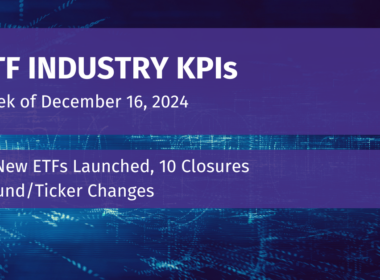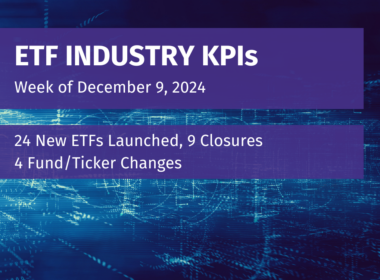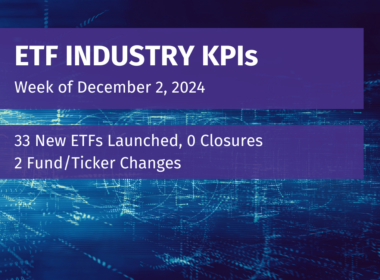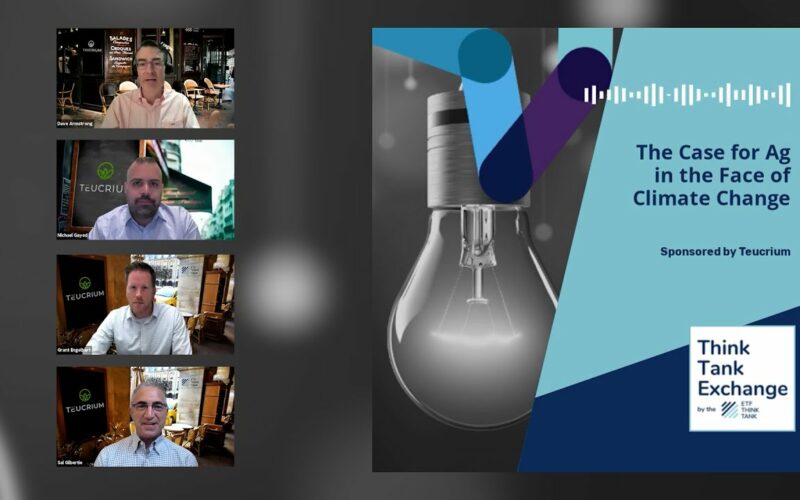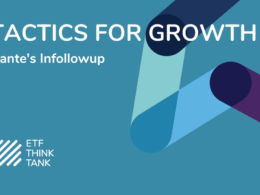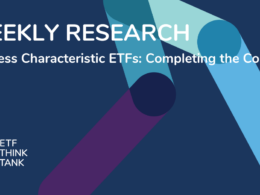
Last week, with the pending and final decision by the Fed, markets were unsurprisingly zigging and zagging, and the media was rationalizing every move in hindsight. Frankly, these are weeks we often prefer to skip, but that is clearly not an option. Is it “noise” or are conditions changing? Circumstances, in our view, are dynamic, and life’s structural changes sometimes need checks and balances.
We’ve broken down meaning of this in “Structure Matters” context, as follows:
Life’s Structural Changes:
- Life’s Journey: How do you fund life’s big moments? Weddings, births, medical expenses, education, and yes – planning for the inevitable – death. ETC, ETC
- Portfolio Strategy: The investment nest egg begins with a sprinkling of cash at the start, and traditional equities and fixed income are added. However, we believe that the non-traditional portion of people’s portfolio over time is going to become increasingly more important for most investors. The need for an alternative type of return stream is true diversification.
Life’s Journey
Life brings curveballs – both good and bad. In the ETF Think Tank, we work with financial advisors on the portfolio construction side of things, but know the challenges and sensitivity that comes with dealing with the curveballs in clients’ lives. Prioritizing the different buckets of investment capital and retirement goals is a challenge, especially given the recognition about how little that dollar saved may actually go in the future. Put simply, we highlight two facts: People are living longer, and cost of living is going higher. For this reason, out of respect for those who know more about planning, we will focus now on a discussion around the investment portfolio.
Portfolio Strategy: Alternative Investing

Accessing alternative steams of earnings is what hedge fund investing should be about. However, the benefits of high fees, leverage and lock-ups by the so called “smartest investment minds” tend to be the real structural advantage. It is this fiduciary irony that we expect will be addressed over the coming years. Innovation is accelerating in the ETF world; even brilliant hedge fund minds who have confidence in their strategies may now want to offer similar types of ETFs to their high-priced strategies sooner rather than later. Cannibalize yourself, or be cannibalized by others. This is because while growth in hedge fund Assets Under Management (AUM) has risen phenomenally, shooting from $1.408 trillion in 2011, to $4,072.5 trillion at the end of Q3 2021, these investors deserve a better wrapper (Data comes from Barclay Hedge and the segmentation of this market offers room for a great deal of innovation https://www.barclayhedge.com/solutions/assets-under-management/hedge-fund-assets-under-management/). The belief that flows into alternative types of strategies will eventually come through hedge funds comes from the fact that this growth in the hedge fund wrapper has come mostly from performance rather than positive net flows. Barclay Hedge reports only $164 billion of positive net flows over the past 10 years, and $283 billion of outflows over the last 3 years. Granted, while low-cost broad solutions remain dominating ETF flows, we do not believe that the true brilliant minds in the hedge fund market will continue to ignore the investor benefits and investment needs provided by ETFs. Put simply, we expect further product innovation in non-traditional solutions to accelerate, given that ETF flows are at $455.8 billion YTD, pacing to eclipse record dollar amounts, and taxes for the wealthy are certainly going to increase. Don’t be surprised to see KPIs for the ETF industry revenues from Active Management increase above 10% soon and together with Non-Traditional revenues to someday make up over 50% of the ETF revenue.

Alternative types of earning streams can be a bit like the characters in the animated sitcom series ZIG and ZAG. In this show, Alien twin brothers from the Planet Zog have crash landed on a strange blue and green planet called Earth, creating all kinds of mayhem. Similarly, alternatives in a 60/40 portfolio could add diversification through low correlation to traditional earnings streams, but this may cause mayhem or, variations versus traditional expectations. Diversification has a price and a benefit! Although certain things ZIG when others ZAG, they ultimately go up – this should lower investor anxiety and help achieve investor goals.

To have an impact on an overall portfolio, we recommend a minimum strategic allocation of 15% to 25% in alternatives/non-traditional strategies. To help with the allocation process, we divide across the following categories, but that does not mean the categories should be spread equally. A thoughtful approach to risk/reward is still required.
- Active Income producing ETFs: Strategies that produce income from Non-Traditional sources, aka options strategies, closed end fund, REITS and multi-asset class fixed income strategies. Arguably, these strategies need to be innovative and actively managed.
- Risk Parity & Low-Neutral Beta strategies that derive returns with a non-traditional mix of assets as a one-stop solution for broad allocation.
- Tactical Strategies/Risk-On/Risk off: using a basket approach maximizes the tax efficiency of the ETF wrapper and can optimize the financial advisor’s time.
- Commodities could be in a super cycle mode and are under-owned and ubiquitous in terms of people’s life-style and standard of living. We don’t see a lot reasons that food costs will go down.
- Bitcoin and Crypto, for its mathematical properties and as a technological disruptor. Some may call it a store of value. Like Paul Tudor Jones – we prefer just to follow the math, utility value and adoption.
Conclusion: Buy in May and Sail Away
Since it’s already June, it’s too late to say “sell in May and go away,” so instead we answer the question about what to buy in June. To be clear, this is not a market timing recommendation or a wholesale “Risk-On/Risk-Off” decision. Last week, the market, as measured by the S&P 500 index, closed at an all-time high (Monday, June 14th at 4,255) and pulled back about 2% (closing Friday June 18th at 4,166). This is a strategy idea for conservative accounts based upon the question of market conditions and expectations about current global market conditions. Investors need to take into consideration questions and unknowns surrounding inflation, the risk of global bank/central bank coordination, and other macro-economic risks. Rather, this is about analysis and a need for diversification in people’s portfolios. In the ETF Think Tank, our goal is to enhance the value of the financial advisor, which can include the inspiration of insights, discussions and research.
https://www.etf.com/channels/alternatives-etfs
https://www.hedgeweek.com/2021/01/05/293984/top-hedge-fund-industry-trends-2021
https://www.barclayhedge.com/solutions/assets-under-management/hedge-fund-assets-under-management/
Disclosure
The information provided here is for financial professionals only and should not be considered an individualized recommendation or personalized investment advice. The investment strategies mentioned here may not be suitable for everyone. Each investor needs to review an investment strategy for his or her own particular situation before making any investment decision.
All expressions of opinion are subject to change without notice in reaction to shifting market conditions. Data contained herein from third party providers is obtained from what are considered reliable sources. However, its accuracy, completeness or reliability cannot be guaranteed.
Examples provided are for illustrative purposes only and not intended to be reflective of results you can expect to achieve.
All investments involve risk, including possible loss of principal.
The value of investments and the income from them can go down as well as up and investors may not get back the amounts originally invested, and can be affected by changes in interest rates, in exchange rates, general market conditions, political, social and economic developments and other variable factors. Investment involves risks including but not limited to, possible delays in payments and loss of income or capital. Neither Toroso nor any of its affiliates guarantees any rate of return or the return of capital invested. This commentary material is available for informational purposes only and nothing herein constitutes an offer to sell or a solicitation of an offer to buy any security and nothing herein should be construed as such. All investment strategies and investments involve risk of loss, including the possible loss of all amounts invested, and nothing herein should be construed as a guarantee of any specific outcome or profit. While we have gathered the information presented herein from sources that we believe to be reliable, we cannot guarantee the accuracy or completeness of the information presented and the information presented should not be relied upon as such. Any opinions expressed herein are our opinions and are current only as of the date of distribution, and are subject to change without notice. We disclaim any obligation to provide revised opinions in the event of changed circumstances.
The information in this material is confidential and proprietary and may not be used other than by the intended user. Neither Toroso or its affiliates or any of their officers or employees of Toroso accepts any liability whatsoever for any loss arising from any use of this material or its contents. This material may not be reproduced, distributed or published without prior written permission from Toroso. Distribution of this material may be restricted in certain jurisdictions. Any persons coming into possession of this material should seek advice for details of and observe such restrictions (if any).


